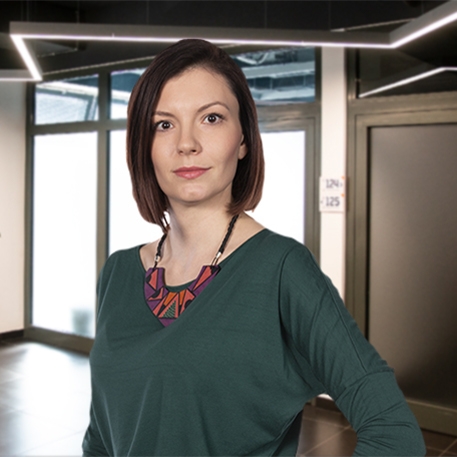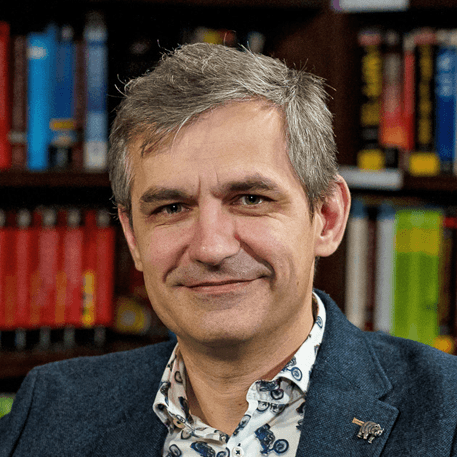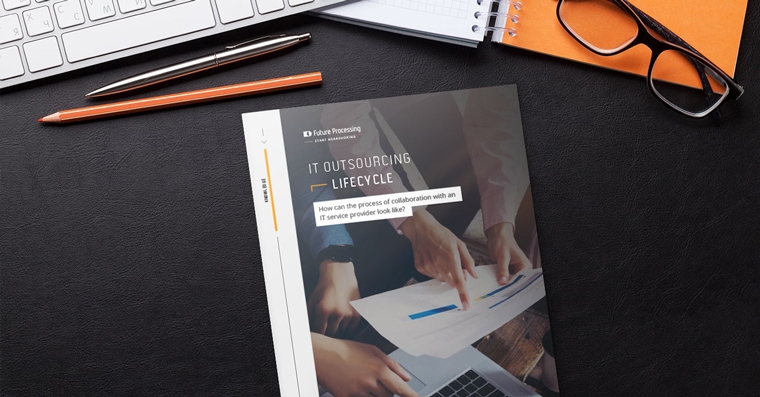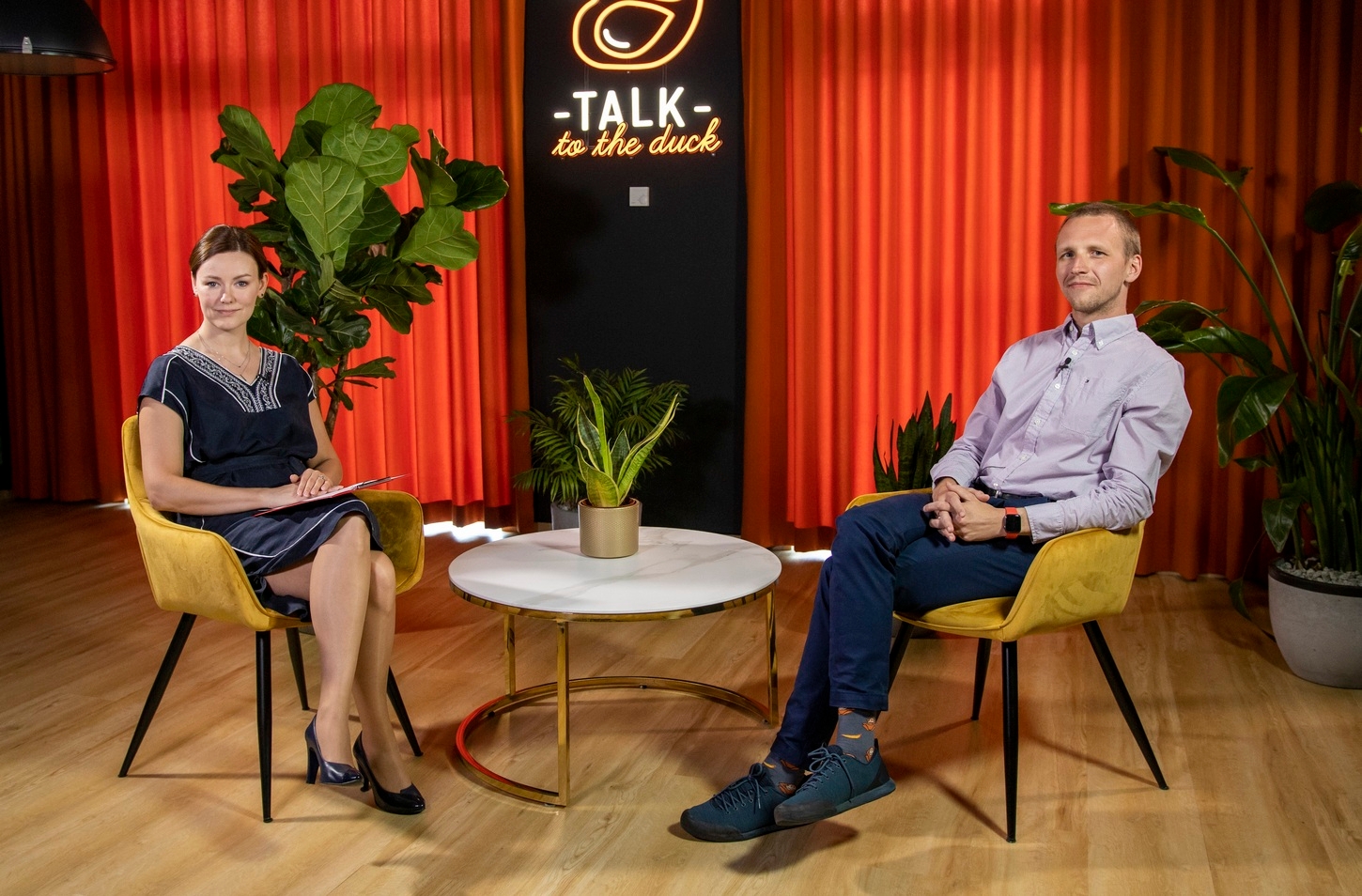- Insights hub
- /
- Building a one team attit...
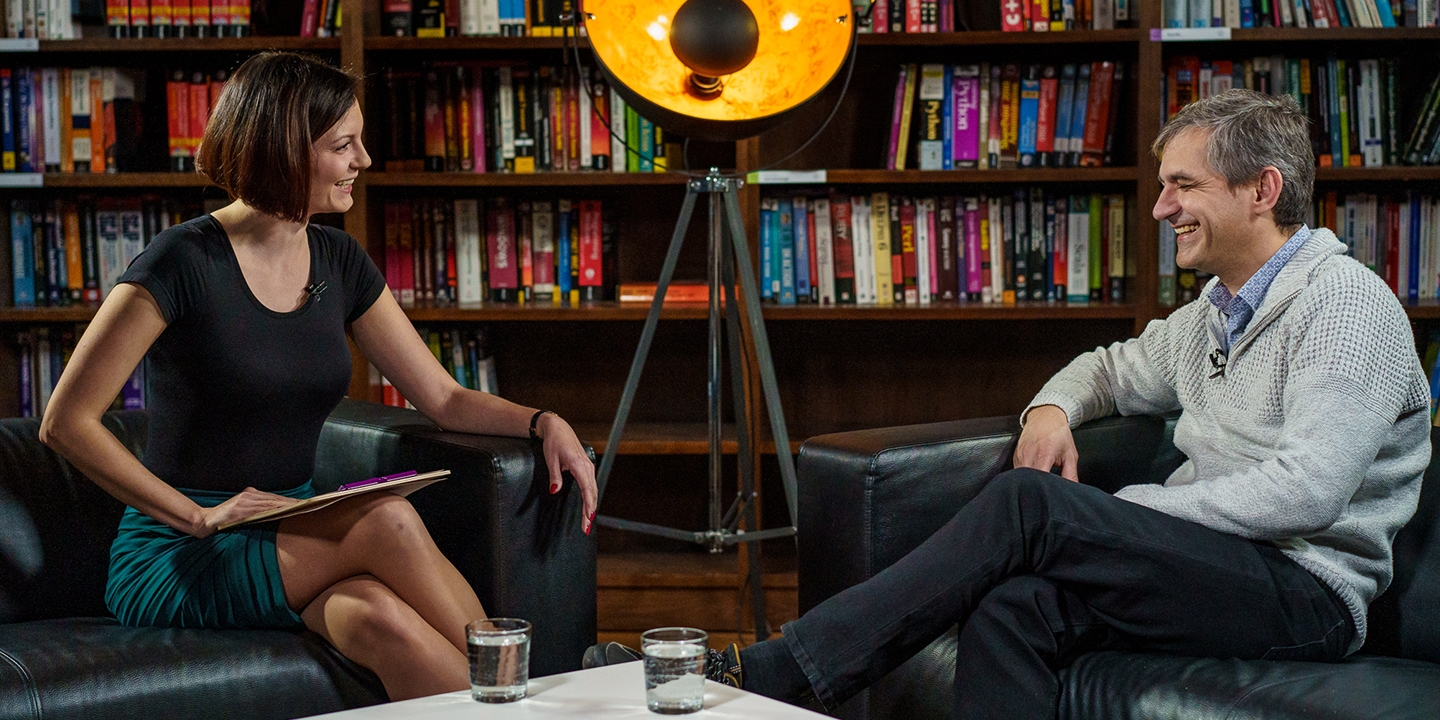
Building a one team attitude when working with an IT partner with Craig Kritzinger
- DetailsAbout the talks
- TranscriptTranscript
- Resources2 Files
Building a one team attitude when working with an IT partner with Craig Kritzinger
Karolina Trzcionka
Delivery Line Manager at Future Processing
In this episode of IT Leadership Insights, Karolina Trzcionka talks with Craig Kritzinger about building a relationship between a client and an IT company where both teams feel like one – with common tasks and objectives.
An IT partnership based on trust is something that benefits both sides, but building trust takes time. Based on a case study, our host and guest discuss how to build a trust-based relationship and talk about factors that influence it.
Our Guests:
Craig Kritzinger is an experienced Technology Leader with a keen interest helping to build highly performant cross-functional technology teams leveraging in-house and nearshore resources. He has a specific focus on creating, scaling and running SaaS technology platforms. Chief Technology Officer at the Independent Data Consultants in UK.
Karolina Trzcionka is Future Processing’s Delivery Line Manager being responsible for successful and high quality delivery. She is passionate about mentoring, exec-coaching and training Team Leaders and Project Managers, helping them being better technology partners for company’s clients.
Karolina Trzcionka (KT): Hello, my name is Karolina Trzcionka. And I’d like to welcome you to this episode of IT Leadership Insights by Future Processing. Working in an IT partnership based on trust is something that benefits both sides. But trust is not something that comes instantly. Instead it has to be earned. My guest today who can say a lot about this topic. He is a very experienced IT professional Craig Kritzinger. Craig, could you tell us a little bit more about yourself, please?
Craig Kritzinger (CK): Hi Karolina. I’ve been working in IT for just over 20 years now. Having started as a software developer and moving through various leadership roles. I’m currently the CTO for Independent Data Consultants in London.
KT: Thank you for that. And myself, besides being a surprise host for this episode, I’m fulfilling the role of service line manager at Future Processing. I’ve been with the company for over 11 years now and started as you Craig from technical role as a QA engineer and then I moved more towards leadership and delivery management roles. I had the pleasure to lead one of the biggest teams in our history, and that’s where we met because it was a team that started eight years ago and we work together for Staffcare that is now called Zest. So first of all Craig, thank you very much for joining me here. So as a client, please tell us how do you come to the conclusion that I now trust my IT partner? How do you come to that?
CK: I think the key thing is to over time you start to see that the deliverables and so on that you requiring are being met at the time that they said that they would deliver them and so on. So you know, trust is something that is a bit tenuous, you end up having to achieve it over time.
KT: All right. And from the IT partner point of view, I think that building trust towards your client, or earning trust from your client, it really comes down to just a couple of points. First of all, and one of the most important for me personally, is the role and the person fulfilling the role of team leader or product manager. Because I think and correct me if I’m wrong, but if you are a client, you tend to build your trust, towards the organization by trusting an individual. So the person who’s your main point of contact who’s fulfilling the role of team leader can really boost or diminish the trust you’ve got towards towards your partner?
CK: Absolutely. It’s that interpersonal relationship that you end up building with that individual. In the case of my interactions with Future Processing. This started when I met Jaro, the CEO and with the openness and honesty that he exhibited during the initial conversations with him, and then coming along and being introduced to the team and yourself and the relationship we were able to build up in terms of whenever there was a commitment made or a conversation had, I knew that what was said would be done, happened.
KT: Yes. So one of the things that we’ve managed to establish was quite open, honest and transparent communication. So we had regular updates from time to time and ad hoc communication when needed, and that one of the most important things that to be honest, what was quite difficult for me at the beginning, was not to be afraid to approach your client if there any problem arise or is there any issue or any issue in the task or in the project goes, goes a bit sideways. And the thing is very important this transparent communication is very important for the client to trust you. And the third thing which kinds of ties back to communication as well. This is the famous quote by yourself Craig is to bring solutions not problems. When you approach your client with a problem, when there is a problem in the product, the product goes sideways in any way. It is not only sufficient to come to a client and raise the problem but also to start thinking about possible solutions to the problem and come prepared to the meeting. So it creates the common ownership, the common responsibility between us and the client regarding fixing the problem.
CK: Sure, absolutely. I think that’s an imperative. As a client, you should be welcoming when your supplier comes to you and raises a particular concern or something, some kind of an issue that might be apparent. You shouldn’t have any kind of fear sort of factor that plays into that, encouraging your supplier to bring you those challenges, but bring you the solutions that could help mitigate those challenges that will ultimately engender trust and this whole concept of working as a single team or one team as I like to.
KT: Yes, and the last thing that I believe is worth mentioning here is the management of expectation. So to manage the expectations of your stakeholders, so to build the trust and the confidence in them that they know what the state of the product is in fact.
CK: Exactly, yeah. Management of expectations, that’s the key to success in all IT projects as far as I’m concerned. So communicate early and communicate often, then everything should go much better.
KT: So speaking of trust, Craig, do you believe there is a typical time that it should take to build trust between a nearshore company and a nearshore partner and an IT client?
CK: I think the point is, as you touched on earlier, trust is never instant. But understanding the kind of personalities that are involved on both sides. I do think you can build trust relatively quickly, but it does need both parties to have that open, honest approach and that willingness to trust each other.
KT: Yes, and I think that the first breakpoint, the first thing that goes a little bit sideways in the project is a good test of how both parties will behave, and whether we are really, really engaged in open and honest communication. So this is the first test.
CK: Absolutely.
KT: So, over your career, Craig, you’ve been involved in a relationship with number of IT providers in different worlds. So Future Processing was one of them, obviously, but not the only one. So could you tell us a little bit more about the projects you’ve been involved in?
CK: So I was originally engaged in Future Processing to implement in the assuring team when we needed to scale fastly we wouldn’t have been able to in the UK, we ended up running that as a hybrid team approach, where I took my UK based team, split that up into smaller sub teams and supplemented those teams with team members from Future Processing. So we were able to scale up that team relatively quickly. So that was a time and material space sort of nearshoring model.
KT: So let’s start with this one because this the one that we work together on. I remember it started in 2011, it started only with five people, both QA’s and developers. And it started with a quite a long, onsite visit of our team where they land domain, then they met your team. I remember it was like straight before Christmas, so it was Christmas time. And then you took a chance to come together with Phil, who was one of the lead developers back then to visit us in Poland and to meet the team to see the offices and we did a proper kickoff together.
CK: Absolutely. So I’d understood that, from my past experience and that of some colleagues, that the imperative to a successful IT partnership would be communication and understanding each other’s ways of working. So as part of that, as you said, we took some of the team over to the UK and when I came with Phil in January, the idea there was, as you said, get to know the organisation, get to know the rest of the team. And I left Phil behind here was actually based here for six weeks during that first part. And then as the relationship progressed, I made sure that members of the UK team, were either travelling to Poland or members of the Polish team, were travelling to the UK on a four to six weeks sort of timeline so that you could build up the interpersonal relationship. These are people after all not just machines churning out code.
KT: That’s true. So, now will be the tricky question. So, we were the chosen vendor for Zest, for Staffcare, but did you trust us immediately?
CK: I’d say that I wanted to trust, I went into it with an open sort of mind on that and saying this is the vendor that I want to succeed. Would I say that I trusted you instantly? No, probably not. There were some reservations in terms of, could these people really get to grips with our code, et cetera, did we have a cultural fit and so on. But because we put all of that effort into the communications and traveling back and forth, we did very quickly build up a trusting relationship.
KT: Yes, I think that the quick scale-up that we had as well, was based on trust somehow.
CK: Mm-hmm.
KT: And so from your perspective, because we started off on the right foot, as we said, but then the relationship matured and we, we had our hurdles in the development, we had two quite challenging deliveries as I remember. And we had the small everyday issues, like the timesheets problems and so on. So how did the relationship mature?
CK: Sure. So I mean, you sort of touching on two different points there. The one was around these sort of challenging deliveries and so on. And what we tried to ensure was that I was having conversations with yourself and the other leaders to make sure that you understood these imperatives and why they were important deliveries. So that we work together to work out how we could get the team to deliver that. It wasn’t just, you need to do this and it’s by that date. We work together to work out the odd of the possible. The timesheets thing that you touch on was also an interesting challenge. Because we use timesheets to try and understand project profitability and so on. Where’s the team initially thought that this was a bit of a control factor and trying to make sure that people were actually working. It wasn’t that at all. But once you realize that it was a topic that you could open up and talk to me about-
KT: Yes, exactly, it really made a difference because I was at the very beginning I was a little bit hesitant to go to yourself, being a client, and say that we’ve got a problem with something that’s a quite typical measuring tool. But I thought that it would be much much more profitable much valuable for the team to understand why do you need that and you did your part and you make time to talk with the team and to make sure that they really understand what it is and what it isn’t.
CK: Absolutely. I think that’s a key, that’s a key piece there right. Understand the people, understand what their concerns are and why they’re concerned. And make sure they understand why exactly you need something to be done. They’re more likely to get on side with you.
KT: Yes. So you’re saying a lot about just trusting the team and letting them do their job. But did you feel the urge to control or to oversee the project, oversee the delivery or did you have a more relaxed approach and gave responsibility to the team?
CK: I hate being micromanaged. And as a result, what I try to do is make sure that I’m not micromanaging my team in turn. So as soon as people do evidence that they are able to and willing to take on some sort of responsibility, I like to let them do that. This sort of manifested where when our UK based, QA engineer resigned, I didn’t bother replacing him. You were already leading the QA function and you were doing a very good job at that, so I let you keep doing that. And within evidence that when the client on that major project that we were undertaking needed to a workshop to go through the QA delivery and UAT phases, you flew from Poland, went to meet them in London, representing Staffcare, and then flew back to Poland without even meeting a Staffcare staff member at the time.
KT: Yes. And to be honest, it was really natural for me to come there and say, “My name is Karolina Trzcionka and I’m from Staffcare.” So it was really very, very, very natural part of our relationship. And I need to admit that our team really enjoyed and appreciated the trust and the responsibility and the impact they were given because it’s really making a difference in terms of everyday motivation. And what’s with the distance because Zest/Staffcare, you are based quite near London, we are based in the south of Poland, did the distance make any difference in your opinion?
CK: I mean, it does make a difference. There’s nothing like face to face conversation, so it’s always gonna be a little bit of a challenge. But if you put a bit of effort into it, it’s not the end of the world, it’s two hours for a flight, so it’s not a problem to do a face to face visit either way. And we then also use tools like Skype for instant messaging and voice conversations. Running a hybrid team approach meant that people were all on stand ups together every day and so on. So it was a very sort of tight-knit team.
KT: Yes, and I recall that we did a lot of effort on both sides to meet face to face as soon as possible as often as possible, as you said, every four to six weeks. And I recall that when planning visits, either your visits here, our visits in your offices, we always took time not to for the visit to take slightly more than needed maybe. So it’s not only about sitting in meetings and ticking off the points in the agenda, but also to sit down together to work, to do the regular work, just desk by desk and to build rapport between the regular team members, isn’t it?
CK: Absolutely. There’s a lot to be said for the osmosis that happens when you sit in a room together and just hear the challenges on a day to day basis.
KT: That’s true. So when it comes to the history that you’ve just mentioned about the client of yours that I had the pleasure representing Staffcare at, I know that some of some of IT companies, some of our clients, they are not very happy to share with their clients that they are working with an IT provider that they are working with a nearshore provider, so I assume your view on that was different. But could you elaborate on that?
CK: Correct, yeah. From my perspective, a key motivator for me to use a nearshore provider is because it’s adding to my arsenal, it’s giving me access to people who have skills that I might not have, it’s giving me the flexibility to change the scale in my team. So in actual fact, it’s adding a lot to my proposition rather than taking away, so I see no reason to hide it.
KT: That’s really great because I believe that from an IT partner point of view it’s really quite… I would say it’s a way of appreciation as well that you are able to, that you are trusted enough that you can even talk to the client of our client. So I believe that the trust that we have built between Staffcare and Future Processing team it has resulted in so-called one team attitude. Would you agree?
CK: Yes, absolutely. And for me that one team approach is fundamentally important. If everybody is, teams are stronger than individuals. and if everybody’s pulling together in the same direction, aiming for the same goals, then you’re gonna deliver a much more successful project.
KT: Yes. And then the compensation thing somehow, So that the team… Each individual’s got his own pros and cons, strong sides and weak sides and the team can compensate one for another.
CK: Absolutely, yeah. Lift each other up.
KT: So what else did we do if we could just recall for our listeners and viewers? What else did we do to build the one team attitude?
CK: I think key thing there is getting to understand the individuals involved. You know, when I was coming over to Future Processing’s offices those many years ago, one of the key meetings that I had that I enjoyed the most was meeting the new members of the team. And as part of that, I’d literally be going around the room looking at the individuals, asking them a little bit abut, the key question was, what makes you tick? What do you do outside of work that keeps you happy?
KT: Yes.
CK: The most interesting answer was, I do some more work.
KT: This too, I remember this meeting, it was quite a big one because the team was around 20 at the time and there was a big bunch of new guys that just came in and we book one of the biggest conference room back then, and you, what you did was not only ask about what the guys like to do besides work, but you also shared the vision of how would you like the team to work, how would you like the both teams to work, what is the product goal, what’s the project vision. So you did a lot of proper kickoff in terms of in terms of introducing to the team and then you spend some time with each one of them trying to understand what they do. It was even good for the rest of the team because we didn’t know each other back then because it was one of our first encounters together. What I think also was quite nice and helped a bit, it kind of ties up to the what makes you tick, and what do you do after work. Because all of them… So all these small gestures, that you tend to do when you’re building a team. So for example, at Future Processing, we’ve got the tradition when someone is getting married or is having a child we are just going for a small celebration, we are buying a present and so on. And now we call that every time we did it, we also asked you guys to participate somehow.
CK: Mm-hmm.
KT: So I remember that I always asked you and you provided signatures of everyone in the teams, scan them, I’ve printed them out and glued them into the card. It was really great and the same goes with the T-shirts.
CK: Absolutely, yeah, it was nice that the team when they were looking to spend a bit of the allowance that they were allowed to spend on fun items went and had staff get T-shirts made. And it’s that idea that there’s been a culture that’s been built here where people identify with being FP staff, but they also identify with the clients. So they sold themselves as part of the Staffcare team.
KT: Yes, exactly. That’s true. And do you think the one team approach could work if you have more than one IT provider? So in your next role at Neyber we had such a situation.
CT: Sure. So what happened when I joined Neyber was that they had an existing outsource provider. The provider was quite small and couldn’t scale rapidly. And we had a bespoke piece of work that we wanted to do that whilst it would talk to the existing systems. It could be built as a greenfield project. So I reached out to the Future Processing and you were able to provide me a team at short notice who could work on that project. And I do believe that we did manage to get the one team approach working across the two different providers as well as the core team based in London. It took a bit more work. And, for the existing provider, we needed to… Well, I needed to convince them that Future Processing wasn’t a threat to them. But rather that this was an ability to grow the capability of the overall team. So it took a little bit longer to build up the trust between the three different parties. But I think we got that.
KT: Yes, I was also involved in this product as well as an engagement manager. So I recall that it wasn’t that easy, because first of all, it requires your understanding and your willingness not to have two partners competing with each other. And then since both of the partners provided more or less the same services, we had to kind of realign each other as towards each other. But at the end of the day, there was a small competition part who delivers best code in the best possible time, but it was all for the best, I guess.
CK: Sure. As a client, that little bit of constructive competition was handy.
KT: Okay. So just to wrap up, any words of advice from your perspective for our viewers, if they would like to build a more trust-based relationship either with the client or with their suppliers, what advice would you give?
CK: I think the key is some of the words we’ve used earlier, openness and honesty, that transparency. Get to know the people on the other side, you can’t build trust, if you just see the person on the other side as a machine, you’ve got to understand the individuals that are there. And that should help you build a sort of one team trusting relationship.
KT: I would say I would add to this with what we’ve said already, so to invest in face to face meetings as often as possible as often as needed to promote the open communication. So what we said already, and I think that, on the on the meta-level, trust has to be built consciously. So as a client, I would say you need to ask yourself” ‘What would make me trust my partner?” and then just to put your partner, your IT partner in the position where they can prove that they’re trustworthy basically.
Craig, thank you very much for today’s conversation, it was lovely to host you. And thank you viewers of IT Leadership Insights. If you have found this interesting, please do not hesitate to share it on your social media or via email. And if you would like any other topic to be covered in this series, please drop us a line. Until next time.
INSIGHTS
Check similar insights
Contact
Get in touch
Have any question about specific material?
Let us know!



